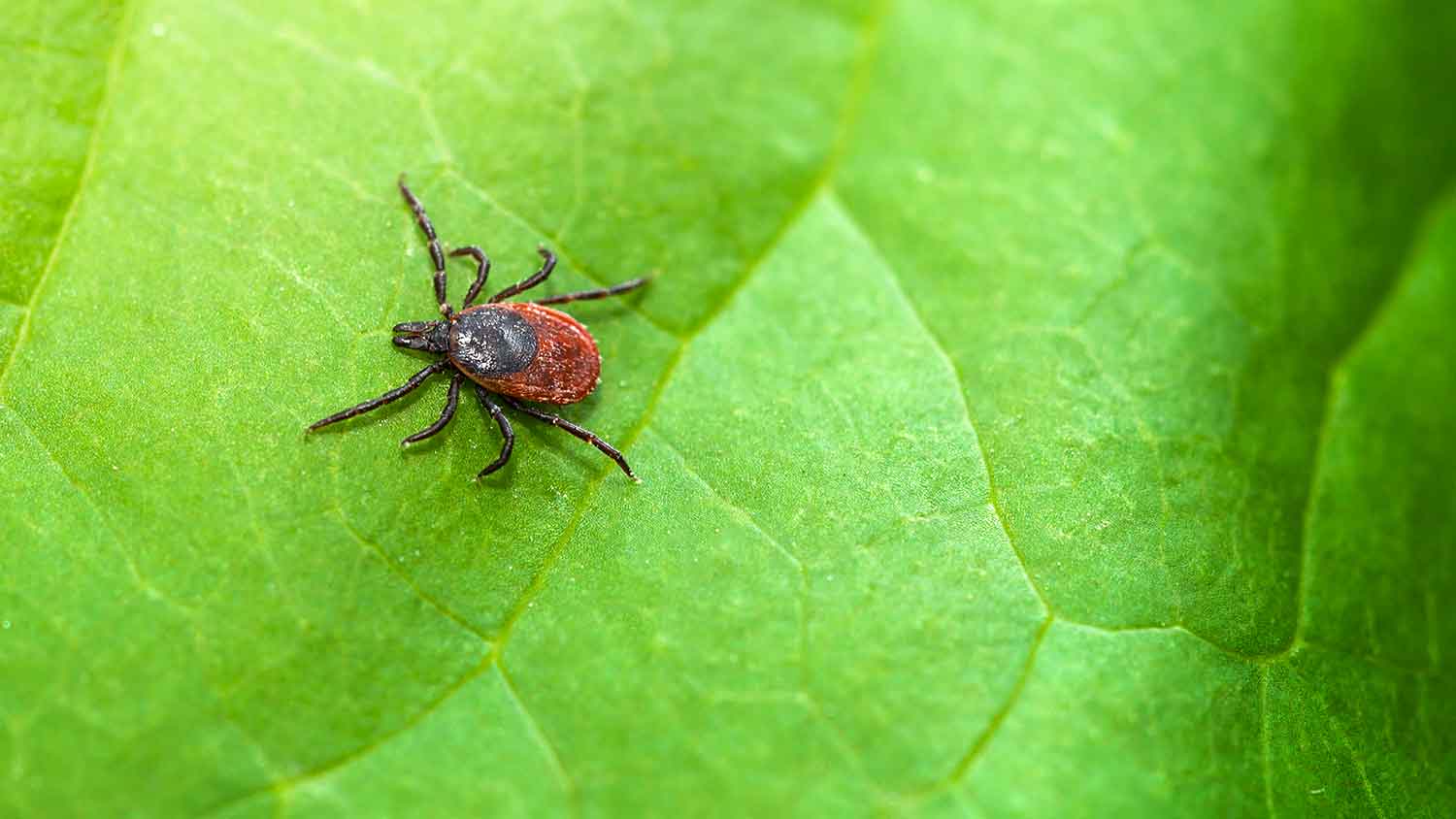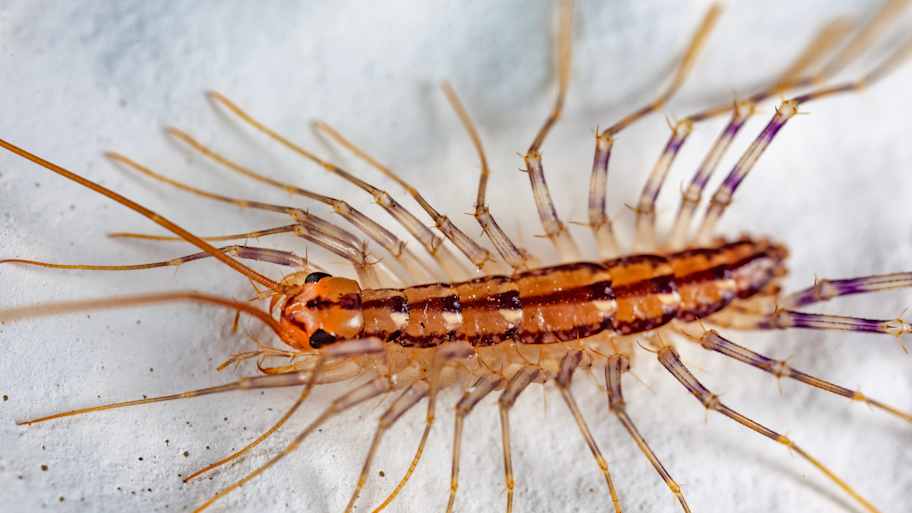
Bats may have their benefits, but you don't want them taking up residence in your home. This guide will help you understand bat removal costs.
These facts on fleas and ticks will scratch your itch for info


Both fleas and ticks are wingless.
Blood is the dinner of choice for both pests.
While ticks are feared for spreading Lyme disease, fleas can spread tapeworm and viruses.
In the battle of fleas vs. ticks, both are itchy, annoying, and potentially dangerous. However, fleas and ticks pose unique threats that require unique prevention and treatment. This guide will cover what makes ticks tick, fleas flee, and humans safer.
| Type of Difference | Fleas | Ticks |
|---|---|---|
| Size | 1–4 mm | 2–6 mm |
| Color | Black to reddish-brown | Dark brown to black |
| Number of Legs | 6 legs | 8 legs |
| Host Preference | Animals and humans | Animals and humans |
| Habitat | Indoors | Outdoors |
| Disease | Can carry disease | Can carry disease |

While immature fleas and ticks share some characteristics, the physical differences between adult fleas and ticks are hard to miss.
The average flea is smaller than the head on a pin. With adult fleas reaching ⅛ inch, these pets are barely visible to the naked eye. However, if you manage to spot a flea, you're likely to only see a tiny brown speck without much detailing.
Ticks are only slightly bigger at 2 to 6 millimeters. Adult ticks range in size from a sesame seed to an apple seed. Nymphs barely reach poppy-seed size.
Ticks are usually brown to black. Meanwhile, fleas are usually a reddish-brown shade.
A flea is an oval-shaped insect with a flat body covered by a hard shell. While most people assume that fleas can fly due to their ability to leap from person to person, they are wingless.
The body of a tick is a flat, broad oval shape. A tick's appearance can vary greatly depending on when it had its last meal. That's because an adult tick can increase its weight by 200 times after becoming engorged from feeding on blood.
Ticks are wingless critters with eight legs. In fact, it should come as no surprise after looking closely at a tick that this species is related to spiders. Fleas only have six legs.

Ticks are parasitic arachnids that feed on blood. They will stay latched for up to six days once they find a host. Fleas feast on the blood of their hosts for weeks at a time.
While most people think fleas will only bite pets, they thrive on the blood of humans and animals. While fleas usually only live for a few weeks, they can potentially feed off of the same host for up to 100 days. They can also survive for several weeks in carpets, upholstery, and furniture.
On the other hand, ticks can feed on mammals, birds, reptiles, and amphibians. Your main concerns should be finding a tick on your pets or household members, which can cause the spread of harmful diseases such as Lyme disease.
A tick bite looks like a small bump or sore. It typically has a tiny but deep red circle encircled by a lighter red patch. It may be accompanied by redness or swelling. Flea bites create redness, itching, and swelling and look like small, red bumps.
While ticks can be active any time of day, fleas tend to be more active in the later part of the day because they prefer cooler temperatures.
Ticks prefer ground-level areas with shade and moisture. They are often found in wooded areas, tall grass, or shrubbery. At your home, ticks may simply crawl around your lawn. Landscaping can provide elevated areas where ticks can "jump off" toward prey.
While there's some evidence that fleas will live in grass, they are most commonly found indoors. Bedding, carpeting, couches, soft chairs, and upholstered items all create perfect environments for fleas.
Both ticks and fleas pose serious health risks to humans because their bites can cause severe allergic reactions due to their saliva.
While people often think of fleas as harmless nuisances, the truth is that a flea infestation is a health concern. Fleas can spread tapeworm, cat-scratch disease, and other illnesses. Flea saliva can also cause skin dermatitis in humans, appearing as itchy bumps or a rash on the skin.
A tick bite can require immediate medical intervention to prevent long-term health consequences.
Any tick can be infected with bacteria, viruses, or parasites that can be lethal to humans. Ticks are also carriers of Lyme disease, Rocky Mountain spotted fever, tularemia, ehrlichiosis, babesiosis, and several other serious diseases.

The process for how to get rid of fleas is slightly more involved. The most effective way to remove fleas is professional flea treatment, which costs $75 to $400, depending on the size, severity, and location of the infestation.
There are several DIY removal steps you can take, but it’s difficult to eradicate all live fleas and eggs without professional intervention. Consider using these DIY methods to remove fleas:
Cleaning all linens
Vacuuming and sealing all upholstery
Sprinkling salt in infested areas
Applying diatomaceous earth (DE) around the home
Making homemade traps using dish soap and water
Buying commercial traps, baits, and powders
While ticks may be abundant in your yard, they are unlikely to "invade" your home. However, if you need to get rid of ticks inside your home, you should treat your pets, launder all linens and clothes, use boric acid on carpets and area rugs, vacuum thoroughly, and deep clean your home. You should also hire a local exterminator to apply non-toxic insecticides to your home to wipe out major infestations.
However, many pest control companies offer lawn treatments that can deter ticks from your property. This is a worthwhile treatment idea if your children or pets spend a lot of time in the yard. Get rid of ticks in your yard by discouraging other wildlife, maintaining your yard, adopting tick in-hospitable landscaping, and using lawn pesticides.
Follow these guidelines for preventing a flea or tick invasion.
Many people find that peppermint, citronella, and eucalyptus help to keep fleas from their home. However, the biggest way to prevent fleas is to limit the amount of time your pets spend outdoors. You should also bathe and brush pets regularly. Ask your vet about safe preventative flea treatments. Make your home inhospitable to fleas by maintaining your yard, including grasses, weeds, and debris piles. Eliminate excess clutter inside and outside the home. Be sure to ward off other backyard wildlife, like deer and possums, that can carry fleas into your yard.
Tick prevention is tricky due to the fact that these pests don't invade your home. They are simply experts at piggybacking! Here are some tips for keeping ticks out of your home:
Change clothing immediately after being outdoors.
Consider natural tick-repellent lawn treatments.
Keep your grass neatly trimmed.
Perform tick checks on your body after spending time outdoors.
Trim or remove shrubs near doors and windows.
From average costs to expert advice, get all the answers you need to get your job done.

Bats may have their benefits, but you don't want them taking up residence in your home. This guide will help you understand bat removal costs.

Unfortunately, ticks can spread diseases to both you and your pets. Find out how much it will cost to treat your property for ticks.

Discover the average ant exterminator cost, factors impacting pricing, and how to save. Get expert tips to budget for ant removal and protect your home.

Discover methods for how to get rid of rabbits using humane tactics, including fences, repellents, and a decoy garden. Get ready to send those bunnies hopping.

Learn the signs of a house centipede infestation and how to prevent these multi-legged creepy crawlers from turning the damp spaces in your home into theirs.

Discover what attracts moles to your yard. Explore the factors that entice these subterranean creatures, from their favorite prey to soil conditions.